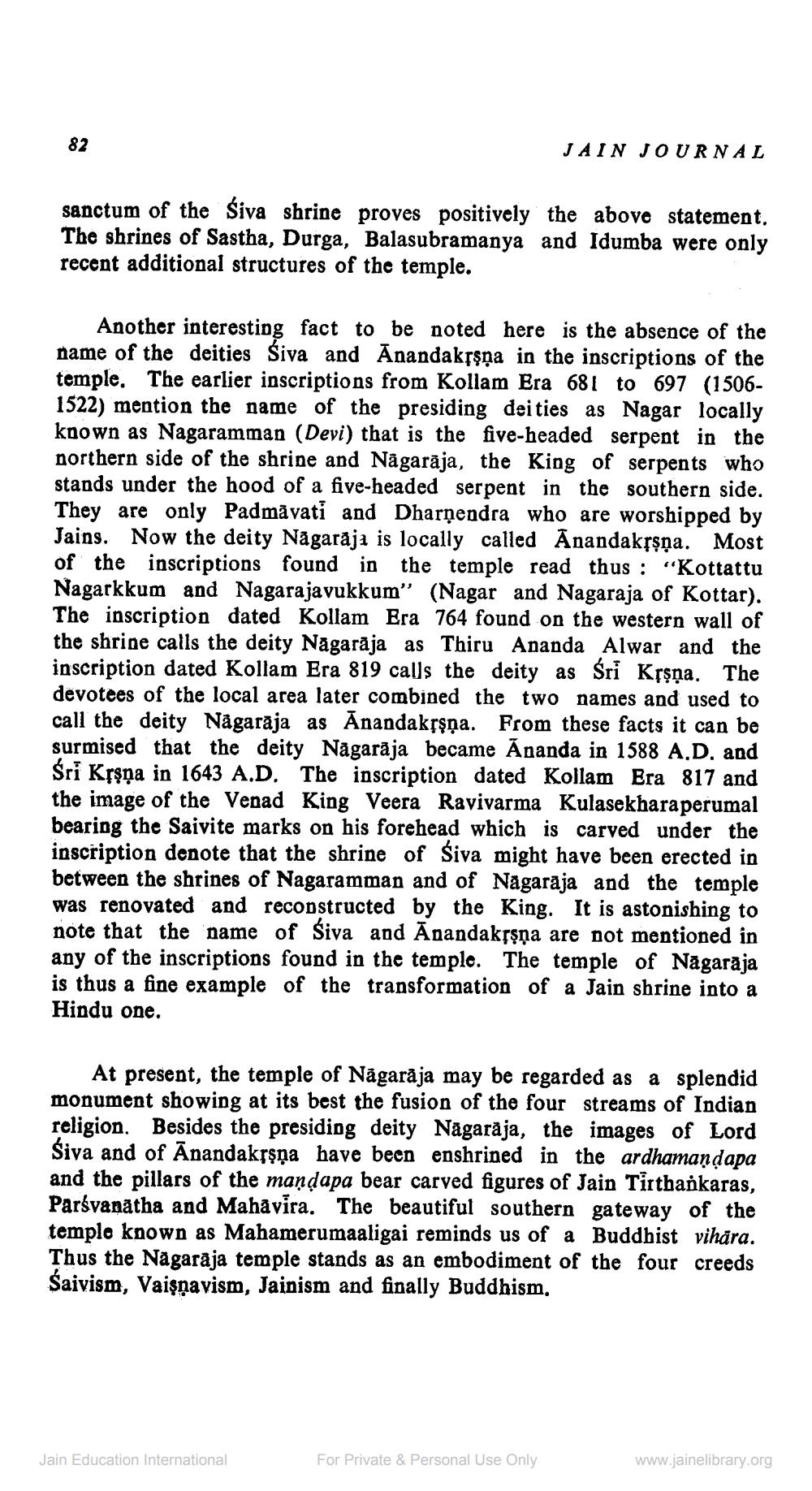________________
82
sanctum of the Śiva shrine proves positively the above statement. The shrines of Sastha, Durga, Balasubramanya and Idumba were only recent additional structures of the temple.
JAIN JOURNAL
Another interesting fact to be noted here is the absence of the name of the deities Śiva and Anandakṛṣṇa in the inscriptions of the temple. The earlier inscriptions from Kollam Era 681 to 697 (15061522) mention the name of the presiding deities as Nagar locally known as Nagaramman (Devi) that is the five-headed serpent in the northern side of the shrine and Nagaraja, the King of serpents who stands under the hood of a five-headed serpent in the southern side. They are only Padmavati and Dharmendra who are worshipped by Jains. Now the deity Nagaraja is locally called Anandakṛṣṇa. Most of the inscriptions found in the temple read thus: "Kottattu Nagarkkum and Nagarajavukkum" (Nagar and Nagaraja of Kottar). The inscription dated Kollam Era 764 found on the western wall of the shrine calls the deity Nagaraja as Thiru Ananda Alwar and the inscription dated Kollam Era 819 calls the deity as Śrī Kṛṣṇa. The devotees of the local area later combined the two names and used to call the deity Nagaraja as Anandakṛṣṇa. From these facts it can be surmised that the deity Nagaraja became Ananda in 1588 A.D. and Śri Kṛṣṇa in 1643 A.D. The inscription dated Kollam Era 817 and the image of the Venad King Veera Ravivarma Kulasekharaperumal bearing the Saivite marks on his forehead which is carved under the inscription denote that the shrine of Siva might have been erected in between the shrines of Nagaramman and of Nagaraja and the temple was renovated and reconstructed by the King. It is astonishing to note that the name of Śiva and Anandakṛṣṇa are not mentioned in any of the inscriptions found in the temple. The temple of Nagaraja is thus a fine example of the transformation of a Jain shrine into a Hindu one.
At present, the temple of Nagarāja may be regarded as a splendid monument showing at its best the fusion of the four streams of Indian religion. Besides the presiding deity Nagaraja, the images of Lord Śiva and of Anandakṛṣṇa have been enshrined in the ardhamanḍapa and the pillars of the mandapa bear carved figures of Jain Tirthankaras, Parsvanatha and Mahavira. The beautiful southern gateway of the temple known as Mahamerumaaligai reminds us of a Buddhist vihāra. Thus the Nagaraja temple stands as an embodiment of the four creeds Śaivism, Vaisnavism, Jainism and finally Buddhism.
Jain Education International
For Private & Personal Use Only
www.jainelibrary.org




